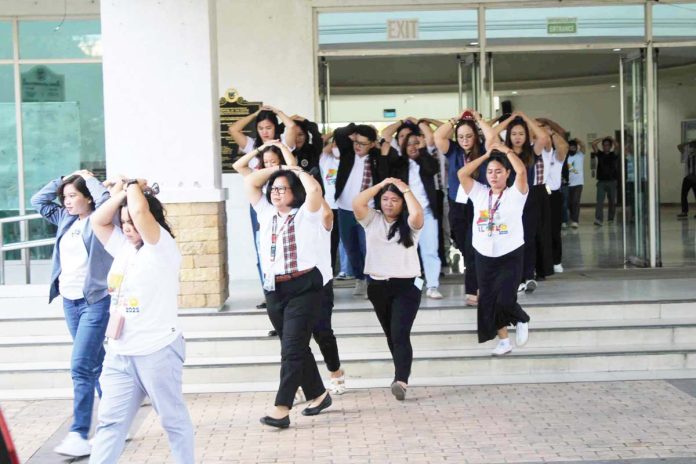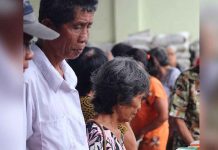
ILOILO — Simulating a powerful 6.9 magnitude earthquake, the Iloilo Provincial Government staged its most extensive earthquake drill to date on June 24, aiming to test the readiness of capitol employees and response units for a major disaster scenario involving multiple casualties.
The exercise, conducted by the Provincial Disaster Risk Reduction and Management Office (PDRRMO), mobilized around 800 to 1,000 employees and first responders across various agencies, including the Department of Interior and Local Government (DILG), Bureau of Fire Protection (BFP), and Philippine Red Cross.
The drill featured complex search and rescue operations, including high-angle rescue simulations, and was designed to mirror a chaotic, real-world emergency.
“This is the first time we simulated five patients across multiple floors of the capitol building, including one outside. We’re pushing the boundaries of our previous drills to come closer to reality,” said Dr. Alfonso Baldonado III, chief of the PDRRMO Admin and Training Division.
Participants practiced the “Duck, Cover, and Hold” protocol, with the entire capitol workforce involved in emergency response exercises that stretched close to an hour — twice as long as previous drills.
“If you notice, we extended the time because in real-life rescues, response can take two to three hours,” Baldonado explained. “Safety must not be rushed. This isn’t just a ‘drill drill’; this is about changing mindsets and making people take preparedness seriously.”
Evaluators monitored not only technical accuracy but also the attitude and behavior of participants. Baldonado noted that the biggest challenge remains public perception, with many still treating simulations lightly.
To further strengthen local disaster response, the PDRRMO is deploying 25 drone units to municipalities lacking aerial capability and is set to begin formal drone pilot training and licensing in the third quarter of 2025.
“As part of our push toward building a more resilient province, we’re not only investing in equipment but also in skills. This includes drone operations and specialized rescue training,” Baldonado said.
The activity comes as Iloilo prepares to serve as a ceremonial site for national disaster response exercises in 2026, underscoring its leadership in disaster risk management in Western Visayas./PN





